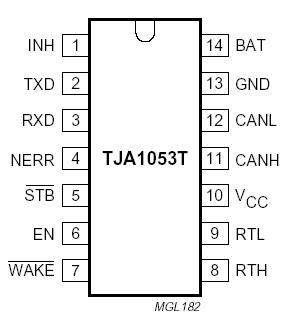TJA1053: Features: Optimized for in-car low-speed communication· Baud rate up to 125 kbaud· Up to 32 nodes can be connected· Supports unshielded bus wires· Low RFI due to built-in slope control function· Ful...
floor Price/Ceiling Price
- Part Number:
- TJA1053
- Supply Ability:
- 5000
Price Break
- Qty
- 1~5000
- Unit Price
- Negotiable
- Processing time
- 15 Days
SeekIC Buyer Protection PLUS - newly updated for 2013!
- Escrow Protection.
- Guaranteed refunds.
- Secure payments.
- Learn more >>
Month Sales
268 Transactions
Payment Methods
All payment methods are secure and covered by SeekIC Buyer Protection PLUS.

 TJA1053 Data Sheet
TJA1053 Data Sheet








